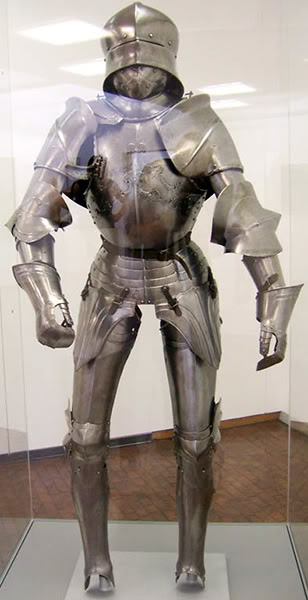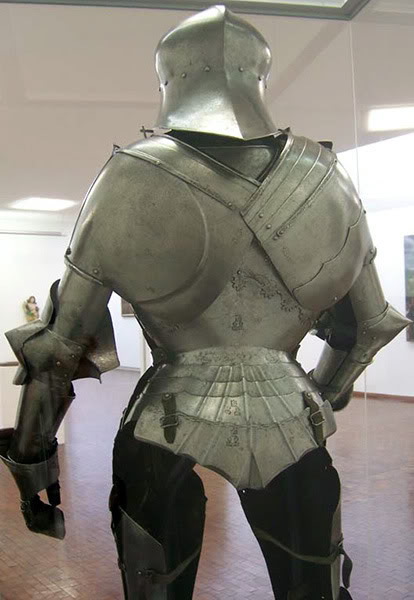Posts: 421 Location: Podgorje, Kamnik, Slovenia, Europe
Mon 04 Jun, 2012 10:11 am
Great pictures. :)
Some more info on the armour:


Schwäbisch Gmünd, Germany, Museum im Prediger, from Heiligenkreuz church,
Milanese armour with certain German stylistic elements.
First published in:
Mann, J. G., 'Notes on the Evolution of Plate Armour in Germany in the Fourteenth and Fifteenth Century' , Archaeologia, 84 ( 1935), most info on armour is from that article:
Armour was in church in Schwäbisch Gmünd until 1935, when historian James Mann called attention to it. Cuirass (breastplate, backplate and lames), pauldrons and arms are homogenous and originate in Milano, made armound 1465 - 1470. German salet, bevor, leg defences and gauntlets are later by about a decade, but were associated with the armour when it was given to the church after 1525, when it was last used in battle of Schmalkalden (a very long working life!). Armour was donated to the Heiligenkreuz church by citizen of Schwäbisch Gmünd, Johann Rauchbein.
The armour is not simply a mixture of Italian and German parts - the Milanese parts (cuirass, pauldrons and arms) exhibit elements of both styles. The breastplate is riveted together, and breastplate and backplate are secured together with waist belt (in German fashion). Decoration of breastplate is similar to German armour. But the lance rest is typical Italian one. Reinforced asymmetrical pauldrons are completely Italian in form, as are arms with assymetrical couters, but have several features that are more common to export armour.

